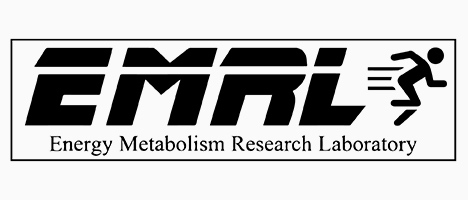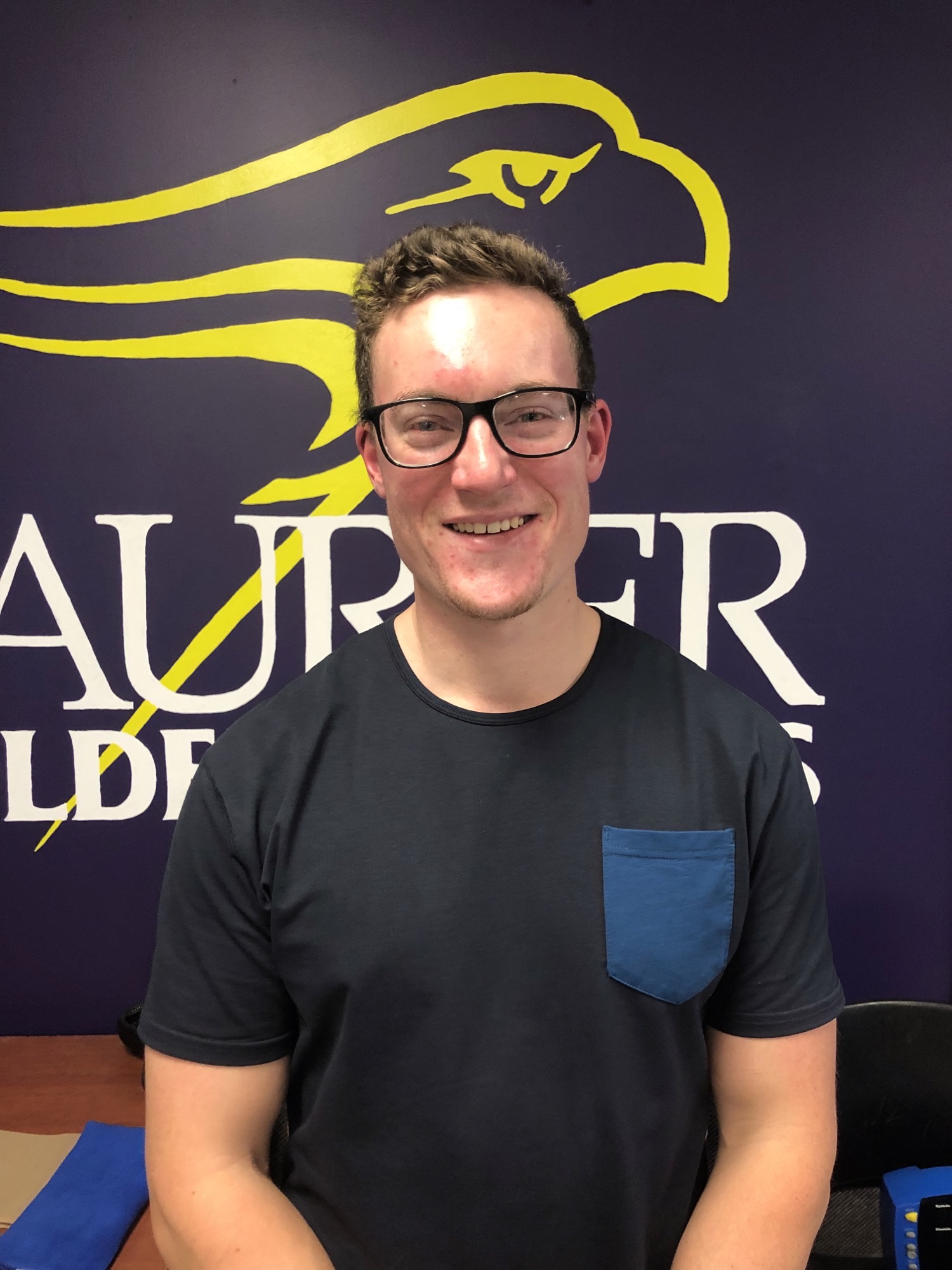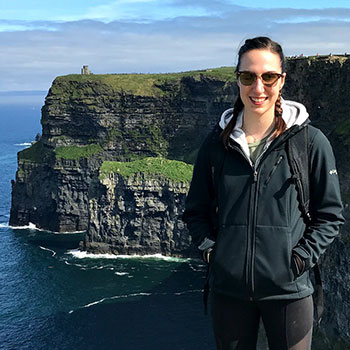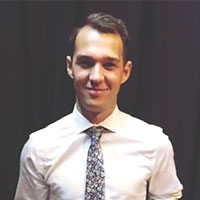We use cookies on this site to enhance your experience.
By selecting “Accept” and continuing to use this website, you consent to the use of cookies.
Search for academic programs, residence, tours and events and more.
 The overall focus of the Energy Metabolism Research Laboratory (EMRL) is the effect of exercise and nutrition on energy balance which is the difference between energy intake (food) and energy expenditure (physical activity/exercise). We have been very interested in the effects of exercise intensity on both energy intake (specifically appetite-regulation, for which we are funded through NSERC) and energy expenditure both during and following exercise.
The overall focus of the Energy Metabolism Research Laboratory (EMRL) is the effect of exercise and nutrition on energy balance which is the difference between energy intake (food) and energy expenditure (physical activity/exercise). We have been very interested in the effects of exercise intensity on both energy intake (specifically appetite-regulation, for which we are funded through NSERC) and energy expenditure both during and following exercise.
Appetite regulation involves the integration of the orexigenic (appetite stimulating) and anorexigenic (appetite inhibiting) hormones in the hypothalamus. While eating is known to influence these hormones, the long-term objective of my NSERC-funded research program is to understand how exercise affects these peripheral signals in humans. Using an integrative approach where exercise and nutrition are used to alter appetite regulation and study the effects of key peripheral appetite signals (i.e., acylated ghrelin, PYY, GLP-1), we are advancing understanding in the fields of energy intake regulation, metabolism, and nutrition.
It is important to explore and understand how exercise suppresses appetite. Improving our understanding appetite regulation is integral in the application of mechanistic research focused on how exercise can be structured to suppress appetite, and therefore improve body composition and overall health.
High-intensity interval training (HIIT) involves brief repeated bouts of near maximal exercise (80%–100% maximal heart rate interspersed with short recovery periods and has been shown to elicit comparable health and performance benefits to moderate-intensity (70% maximal oxygen consumption (VO2max)) continuous training, albeit with much less time-commitment and exercise volume. Similar benefits are achieved with a more intense form of intermittent exercise known as sprint interval training (SIT) that involves supramaximal (>100% VO2max) work bouts, traditionally structured as four to six 30-second “all-out” efforts separated by four minutes of recovery.
We are interested in the effects of both HIIT and SIT on energy expenditure, substrate oxidation, and its ability to promote fat loss in response to a training program. While exercise intensity appears beneficial to these physiological processes, a common criticism is that people will not participate in interval training on a regular basis despite its ability to improve health and fitness. To address this issue, we collaborate with Dr. Jennifer Roberston-Wilson and Dr. Mark Eys (both of the Department of Kinesiology and Physical Education at Laurier) to investigate the psychological responses to interval training.
PhD Candidate, 2019 to present
 Derek completed his undergraduate and Master’s at the University of Windsor. His Master’s advisor was actually the same as Dr. Hazell’s. Derek came to Laurier in 2019 interested in the role of blood glucose and insulin in appetite regulation is conducting studies to determine if fluctuations in glucose and insulin mediate appetite post-exercise. Outside of the lab, you cand find Derek playying hockey, golf, snowboarding or being a Leaf and Blue Jays fan and all the frustrations that come along with that. Derek is funded by an Ontario Graduate Scholarship.
Derek completed his undergraduate and Master’s at the University of Windsor. His Master’s advisor was actually the same as Dr. Hazell’s. Derek came to Laurier in 2019 interested in the role of blood glucose and insulin in appetite regulation is conducting studies to determine if fluctuations in glucose and insulin mediate appetite post-exercise. Outside of the lab, you cand find Derek playying hockey, golf, snowboarding or being a Leaf and Blue Jays fan and all the frustrations that come along with that. Derek is funded by an Ontario Graduate Scholarship.
PhD Candidate, 2020 to present
 Seth completed his Bachelor’s of Human Kinetics at the University of Windsor before joining the EMRL. Seth’s Master’s was conducted in the EMRL examined the effects of different exercise intensities on post-exercise hypertension, in collaboration with Dr. Kenji Kenno from the University of Windsor. His results suggest that moderate-intensity continuous training, high-intensity interval training, and sprint interval training are all beneficial for post-exercise blood pressure. Seth decided to stay in the EMRL to pursue his Doctorate where he is now NSERC-funded working on the role of lactate as a mediator of exercise-induced appetite suppression. Outside of the lab, Seth likes to enjoy the outdoors, exercise, and watch sports.
Seth completed his Bachelor’s of Human Kinetics at the University of Windsor before joining the EMRL. Seth’s Master’s was conducted in the EMRL examined the effects of different exercise intensities on post-exercise hypertension, in collaboration with Dr. Kenji Kenno from the University of Windsor. His results suggest that moderate-intensity continuous training, high-intensity interval training, and sprint interval training are all beneficial for post-exercise blood pressure. Seth decided to stay in the EMRL to pursue his Doctorate where he is now NSERC-funded working on the role of lactate as a mediator of exercise-induced appetite suppression. Outside of the lab, Seth likes to enjoy the outdoors, exercise, and watch sports.
PhD Student, 2023 to present
 Jessie completed her BSc in Kinesiology with a minor in Nutrition at the University of Waterloo. Jessie then joined the EMRL as a Masters student researching the role of ovarian hormones (estrogen and progesterone) in pre- vs post-menopausal females. These provided insight into what role the withdrawal of ovarian hormones plays in appetite regulation and is important considering exercise interventions are less effective for inducing fat mass loss in females. Jessie worked as a Research Assistant for Dr. Andrea Josse at York Univeristy for a year before rejoining the EMRL as a PhD student in the fall of 2023 where her dissertation will again focus on the role of ovarian hormones in appetite-regulation. Jessie has been continuously supported by Ontario Graduate Scholarhships throughout her graduate training. Aside from her work in the lab, Jessie is a strength & conditioning coach and an avid cross country runner.
Jessie completed her BSc in Kinesiology with a minor in Nutrition at the University of Waterloo. Jessie then joined the EMRL as a Masters student researching the role of ovarian hormones (estrogen and progesterone) in pre- vs post-menopausal females. These provided insight into what role the withdrawal of ovarian hormones plays in appetite regulation and is important considering exercise interventions are less effective for inducing fat mass loss in females. Jessie worked as a Research Assistant for Dr. Andrea Josse at York Univeristy for a year before rejoining the EMRL as a PhD student in the fall of 2023 where her dissertation will again focus on the role of ovarian hormones in appetite-regulation. Jessie has been continuously supported by Ontario Graduate Scholarhships throughout her graduate training. Aside from her work in the lab, Jessie is a strength & conditioning coach and an avid cross country runner.
 Abbey completed her BA in Kinesiology at Laurier in 2018. She undertook a fourth-year undergraduate thesis project in the EMRL studying the effects of fasting and feeding on post-exercise metabolism. Abbey then completed her Master’s in the EMRL where her project focussed on the impact of high-intensity classroom activity breaks. Her research in primary school students demonstrated a 4 min classroom activity break improved student’s on-task behaviour and physical activity levels, meaning the students were more focussed during classroom activities and accumulated more activity! Abbey was supported by an Ontario Graduate Scholarship and an NSERC Canada Graduate Scholarship during her Masters. She is now a 2nd year Bachelor of Education student at Laurier.
Abbey completed her BA in Kinesiology at Laurier in 2018. She undertook a fourth-year undergraduate thesis project in the EMRL studying the effects of fasting and feeding on post-exercise metabolism. Abbey then completed her Master’s in the EMRL where her project focussed on the impact of high-intensity classroom activity breaks. Her research in primary school students demonstrated a 4 min classroom activity break improved student’s on-task behaviour and physical activity levels, meaning the students were more focussed during classroom activities and accumulated more activity! Abbey was supported by an Ontario Graduate Scholarship and an NSERC Canada Graduate Scholarship during her Masters. She is now a 2nd year Bachelor of Education student at Laurier.
 Lauren completed her BSc in Nutritional and Nutraceutical Sciences at the University of Guelph in 2019. She joined the EMRL later that year and her work initially aimed to evaluate the efficacy of sprint interval training frequency (3 vs 4 vs 5 times per week) in healthy recreationally-active adults on cardiorespiratory. However, the COVID-19 pandemic significantly delayed and slowed data collection and Lauren was forced to pivot. Her eventual project focused on the potential crossover effect of running or cycling sprint interval training on cardiorespiratory fitness. Her results demonstrated running training may generate greater crossover effects than cycling, though cycling and running protocols induced similar improvements when tested in the same mode.
Lauren completed her BSc in Nutritional and Nutraceutical Sciences at the University of Guelph in 2019. She joined the EMRL later that year and her work initially aimed to evaluate the efficacy of sprint interval training frequency (3 vs 4 vs 5 times per week) in healthy recreationally-active adults on cardiorespiratory. However, the COVID-19 pandemic significantly delayed and slowed data collection and Lauren was forced to pivot. Her eventual project focused on the potential crossover effect of running or cycling sprint interval training on cardiorespiratory fitness. Her results demonstrated running training may generate greater crossover effects than cycling, though cycling and running protocols induced similar improvements when tested in the same mode.
 Dan completed his BA in Kinesiology at Laurier in 2017. Dan joined the EMRL in 2018 and expanded the EMRL’s focus onto resistance exercise. While traditional resistance training involves heavy loads completed at a relatively low repetition range (3-10), Dan’s Master’s thesis focused on the effect of low-load (30% of 1-repetition maximum) high-volume resistance training on energy balance. Though delayed due to COVID-19, his results demonstrate low-load high-repetition resistance training session elevates post-exercise metabolism and blood lactate while decreasing subjective appetite compared to high-load low-repetition training suggesting more positive benefits to energy balance. Dan is now a Lab Instructor in the Department of Kinesiology and Physical Education at Laurier.
Dan completed his BA in Kinesiology at Laurier in 2017. Dan joined the EMRL in 2018 and expanded the EMRL’s focus onto resistance exercise. While traditional resistance training involves heavy loads completed at a relatively low repetition range (3-10), Dan’s Master’s thesis focused on the effect of low-load (30% of 1-repetition maximum) high-volume resistance training on energy balance. Though delayed due to COVID-19, his results demonstrate low-load high-repetition resistance training session elevates post-exercise metabolism and blood lactate while decreasing subjective appetite compared to high-load low-repetition training suggesting more positive benefits to energy balance. Dan is now a Lab Instructor in the Department of Kinesiology and Physical Education at Laurier.
 Greg completed his BA in Sport, Health and Physical Education with a minor in Psychology at Vancouver Island University. Greg joined the EMRL in 2016 and focused on the effectiveness and adherence of performing running sprint interval training and moderate-intensity continuous training protocols in a real-world setting. A very difficult study to run, low adherence hampered his overall results, but generally they suggest that both moderate-intensity and sprint interval training are effective when performed consistently as exercise adherence and change in cardiorespiratory fitness were positively correlated. We are looking to continue this work post-COVID. During his time in the EMRL, Greg also worked as a strength and conditioning intern with Laurier Athletics where he helped organize sessions and coach athletes to improve their conditioning and sports performance. Greg is now a Strength & Conditioning Coach at Red Deer College in Alberta.
Greg completed his BA in Sport, Health and Physical Education with a minor in Psychology at Vancouver Island University. Greg joined the EMRL in 2016 and focused on the effectiveness and adherence of performing running sprint interval training and moderate-intensity continuous training protocols in a real-world setting. A very difficult study to run, low adherence hampered his overall results, but generally they suggest that both moderate-intensity and sprint interval training are effective when performed consistently as exercise adherence and change in cardiorespiratory fitness were positively correlated. We are looking to continue this work post-COVID. During his time in the EMRL, Greg also worked as a strength and conditioning intern with Laurier Athletics where he helped organize sessions and coach athletes to improve their conditioning and sports performance. Greg is now a Strength & Conditioning Coach at Red Deer College in Alberta.
 Hashim completed his BSc in Exercise Science at the University of Lethbridge. He joined the EMRL in 2014 after having completed an undergraduate project with Dr. Hazell at Lethbridge and moving to Ontario to attend Laurier. His Master’s thesis research examined the effect of exercise on appetite-regulating hormones, focusing specifically on the mechanisms that alter the release of these hormones in response to various intensities of exercise. Hashim’s data implicated both lactate and interleukin-6 as important potential mediators of exercise-induced appetite suppression. After completing his Master’s Hashim completed his NSERC-funded PhD in muscle physiology at Queen’s University with Dr. Brendon Gurd and is now an NSERC-funded Post-Doctoral Fellow at the University of British Columbia Okanagan working with Dr. Jonathan Little.
Hashim completed his BSc in Exercise Science at the University of Lethbridge. He joined the EMRL in 2014 after having completed an undergraduate project with Dr. Hazell at Lethbridge and moving to Ontario to attend Laurier. His Master’s thesis research examined the effect of exercise on appetite-regulating hormones, focusing specifically on the mechanisms that alter the release of these hormones in response to various intensities of exercise. Hashim’s data implicated both lactate and interleukin-6 as important potential mediators of exercise-induced appetite suppression. After completing his Master’s Hashim completed his NSERC-funded PhD in muscle physiology at Queen’s University with Dr. Brendon Gurd and is now an NSERC-funded Post-Doctoral Fellow at the University of British Columbia Okanagan working with Dr. Jonathan Little.
 Claudia completed her BA in Kinesiology at Laurier in 2018 before joining the EMRL in 2019. Her Master’s thesis, co-supervised by Dr. Jennifer Robertson-Wilson and in collaboration with Dr. Mark Eys, compare psychological responses to, preference for, and adherence to moderate-intensity continuous training, high-intensity interval training (bouts near maximal effort), and modified sprint-interval training (all-out efforts) among adults aged 30-50 years. Though also delayed due to the COVID-19 pandemic, preliminary results suggest a single session of moderate-intensity continuous training or high-intensity interval training is more enjoyable and preferred compared to modified-sprint interval training protocol. We are currently collecting additional participants to enhance our sample size.
Claudia completed her BA in Kinesiology at Laurier in 2018 before joining the EMRL in 2019. Her Master’s thesis, co-supervised by Dr. Jennifer Robertson-Wilson and in collaboration with Dr. Mark Eys, compare psychological responses to, preference for, and adherence to moderate-intensity continuous training, high-intensity interval training (bouts near maximal effort), and modified sprint-interval training (all-out efforts) among adults aged 30-50 years. Though also delayed due to the COVID-19 pandemic, preliminary results suggest a single session of moderate-intensity continuous training or high-intensity interval training is more enjoyable and preferred compared to modified-sprint interval training protocol. We are currently collecting additional participants to enhance our sample size.
 Greg completed his BA in Kinesiology at Laurier in 2016. He undertook a fourth-year undergraduate thesis project in the EMRL focused on the aerobic and anaerobic effects of manipulating the work-to-rest ratios of sprint interval training. His Master’s research IL-6 plays a role in the appetite-inhibitory effects of moderate-intensity continuous exercise in humans by utilizing an obese human model. His results suggest little difference in the appetite-regulatory and perceptual response to exercise between lean and sedentary males with obesity. These results call into question the potential role of IL-6 in appetite regulation. Greg was supported by an Ontario Graduate Scholarship during his Master’s and is now an NSERC-funded PhD Candidate at the University of Guelph working with Dr. David Wright.
Greg completed his BA in Kinesiology at Laurier in 2016. He undertook a fourth-year undergraduate thesis project in the EMRL focused on the aerobic and anaerobic effects of manipulating the work-to-rest ratios of sprint interval training. His Master’s research IL-6 plays a role in the appetite-inhibitory effects of moderate-intensity continuous exercise in humans by utilizing an obese human model. His results suggest little difference in the appetite-regulatory and perceptual response to exercise between lean and sedentary males with obesity. These results call into question the potential role of IL-6 in appetite regulation. Greg was supported by an Ontario Graduate Scholarship during his Master’s and is now an NSERC-funded PhD Candidate at the University of Guelph working with Dr. David Wright.
 Sara completed her BA in Kinesiology at Laurier in 2017. Her Master’s thesis research utilized vigorous-intensity continuous training as a method to modulate plasma concentrations of the ovarian hormones estrogen and progesterone to examine their involvement in appetite regulation across the menstrual cycle. Her results suggest the typical post-exercise suppression of acylated ghrelin may be blunted in the presence of elevated ovarian hormones in the luteal phase, though sex hormones do not appear to play a role in the anorexigenic hormone response to acute exercise. Sara was supported by a NSERC Canada Graduate Scholarship and an Ontario Graduate Scholarships during her Master’s.
Sara completed her BA in Kinesiology at Laurier in 2017. Her Master’s thesis research utilized vigorous-intensity continuous training as a method to modulate plasma concentrations of the ovarian hormones estrogen and progesterone to examine their involvement in appetite regulation across the menstrual cycle. Her results suggest the typical post-exercise suppression of acylated ghrelin may be blunted in the presence of elevated ovarian hormones in the luteal phase, though sex hormones do not appear to play a role in the anorexigenic hormone response to acute exercise. Sara was supported by a NSERC Canada Graduate Scholarship and an Ontario Graduate Scholarships during her Master’s.
 Kyle completed his BA in Kinesiology at Laurier in 2016. His Master’s thesis research compared the incidence of response between a traditional sprint interval training protocol (4–6 x 30 s all out with 240 s recovery) and 2 modified sprint interval training protocols (8–12 x 15 s all-out efforts with 120 s recovery and 24–36 x 5 s all out efforts with 40 s recovery) over 4 weeks of training in 84 recreationally active individuals. His results demonstrated that the incidence of response was similar across all training groups when evaluating aerobic capacity (which arguably has the greatest health implications), validating the use of a modified 15:120 and 5:40 sprint interval training protocols to improve cardiorespiratory fitness. This work was done in collaboration with Dr. Brendon Gurd at Queen’s University and his PhD student Jacob Bonafiglia.
Kyle completed his BA in Kinesiology at Laurier in 2016. His Master’s thesis research compared the incidence of response between a traditional sprint interval training protocol (4–6 x 30 s all out with 240 s recovery) and 2 modified sprint interval training protocols (8–12 x 15 s all-out efforts with 120 s recovery and 24–36 x 5 s all out efforts with 40 s recovery) over 4 weeks of training in 84 recreationally active individuals. His results demonstrated that the incidence of response was similar across all training groups when evaluating aerobic capacity (which arguably has the greatest health implications), validating the use of a modified 15:120 and 5:40 sprint interval training protocols to improve cardiorespiratory fitness. This work was done in collaboration with Dr. Brendon Gurd at Queen’s University and his PhD student Jacob Bonafiglia.
 Logan completed his BA in Kinesiology at the University of Lethbridge. He started in the lab as an undergraduate student at Lethbridge before re-locating to Laurier to begin his Masters. Logan’s Master's research examined whether appetite regulation is altered across the menstrual cycle or with oral contraceptives. His results suggest that subtle differences exist between appetite-regulating hormones and perceived appetite throughout the menstrual cycle and with oral contraceptive use. Logan was funded by an Ontario Graduate Scholarship while in the EMRL. After completing his Master's degree, Logan completed an NSERC-funded PhD at the University of Guelph with Dr. David Wright and is now a CIHR-funded Post-Doctoral Fellow at McMaster University working with Dr. Gregory Steinberg.
Logan completed his BA in Kinesiology at the University of Lethbridge. He started in the lab as an undergraduate student at Lethbridge before re-locating to Laurier to begin his Masters. Logan’s Master's research examined whether appetite regulation is altered across the menstrual cycle or with oral contraceptives. His results suggest that subtle differences exist between appetite-regulating hormones and perceived appetite throughout the menstrual cycle and with oral contraceptive use. Logan was funded by an Ontario Graduate Scholarship while in the EMRL. After completing his Master's degree, Logan completed an NSERC-funded PhD at the University of Guelph with Dr. David Wright and is now a CIHR-funded Post-Doctoral Fellow at McMaster University working with Dr. Gregory Steinberg.
 Luke completed his Bachelor’s of Kinesiology at McMaster University in 2016. He joined the lab later that year and his Master’s research examined the role of lactate on appetite using sodium bicarbonate supplementation alter blood lactate concentrations during high-intensity exercise. His results further implicate lactate as a mediator of exercise-induced appetite suppression, given exercise-induced increases in lactate during the sodium bicarbonate session altered peripheral concentrations of appetite-regulating hormones, culminating in a reduction of appetite. During his time in the EMRL, Luke also worked as a strength and conditioning intern with Laurier Athletics where he helped organize sessions and coach athletes to improve their conditioning and sports performance. He is now an Strength & Conditioning Coach (Apprenticeship) at the Canadian Sport Institute Ontario.
Luke completed his Bachelor’s of Kinesiology at McMaster University in 2016. He joined the lab later that year and his Master’s research examined the role of lactate on appetite using sodium bicarbonate supplementation alter blood lactate concentrations during high-intensity exercise. His results further implicate lactate as a mediator of exercise-induced appetite suppression, given exercise-induced increases in lactate during the sodium bicarbonate session altered peripheral concentrations of appetite-regulating hormones, culminating in a reduction of appetite. During his time in the EMRL, Luke also worked as a strength and conditioning intern with Laurier Athletics where he helped organize sessions and coach athletes to improve their conditioning and sports performance. He is now an Strength & Conditioning Coach (Apprenticeship) at the Canadian Sport Institute Ontario.
Funding for EMRL is provided by Laurier, the Natural Sciences and Engineering Research Council of Canada (NSERC) and the Canada Foundation for Innovation.


Tom Hazell
E: thazell@wlu.ca
T: 519.884.1970 x3048
Office Location:
Northdale Science Research Centre, Waterloo